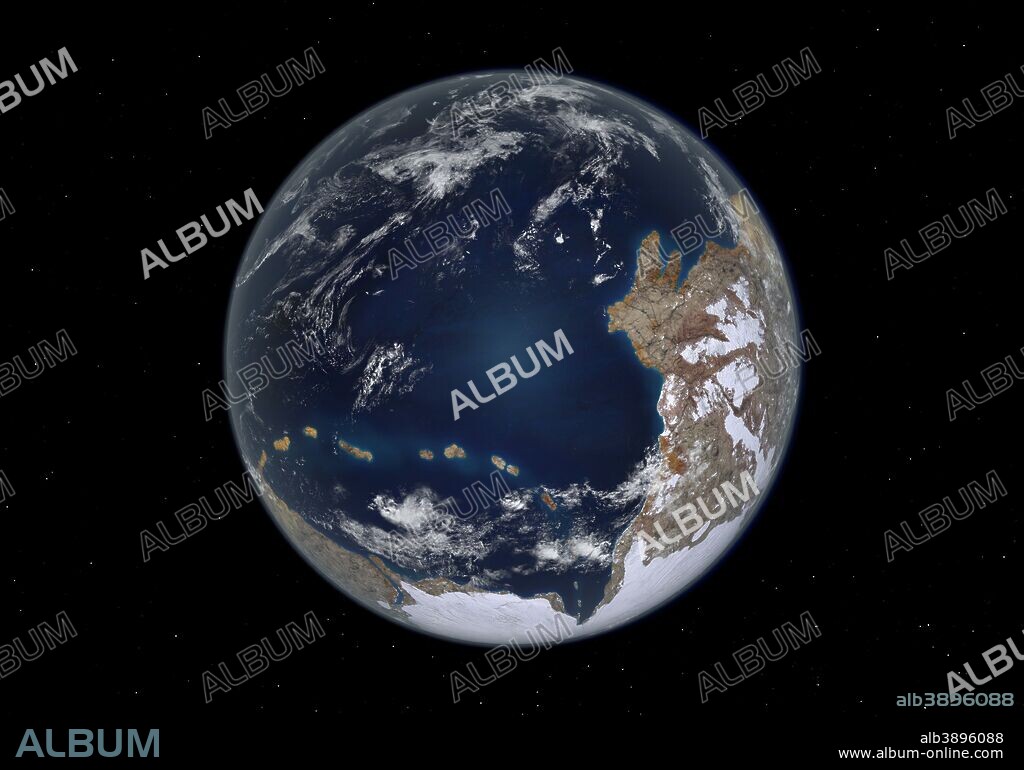alb3896088
Planet Earth 600 million years ago following the Cryogenian period.

|
Añadir a otro lightbox |
|
Añadir a otro lightbox |



¿Ya tienes cuenta? Iniciar sesión
¿No tienes cuenta? Regístrate
Compra esta imagen.
Selecciona el uso:

Título:
Planet Earth 600 million years ago following the Cryogenian period.
Descripción:
Ver traducción automática
This is how the Earth may have appeared 600 million years ago following the Cryogenian Snowball Earth period. The worldwide glaciers have melted and the ocean is largely liquid again. During this, the Ediacaran period, it is hypothesized that all of the Earth's landmasses had merged into a single supercontinent known as Pannotia, also known as the Vendian supercontinent. Surrounding this massive landmass is the vast Panthalassic Ocean, also known as Panthalassa.. . While the ocean was home to a variety of evolving multicellular life forms including the ubiquitous Dickinsonia costata, it is not believed that life had moved to dry land with possible exception of bacteria and other microbial colonies.
Crédito:
Album / Walter Myers/Stocktrek Images
Autorizaciones:
Tamaño imagen:
5000 x 3500 px | 50.1 MB
Tamaño impresión:
42.3 x 29.6 cm | 16.7 x 11.7 in (300 dpi)
Palabras clave:
ACCIDENTE GEOGRAFICO • ACCIDENTES GEOGRÁFICOS • AGUA • ASTRONOMIA • CIENCIA DE LA TIERRA • CIENCIA • CIENCIAS NATURALES • CONTINENTE • EPOCA PREHISTORICA • ESPACIAL • ESPACIALES • ESPACIO • EVOLUCION • FALLO • FLOTA • GEOGRAFÍA FÍSICA • GEOGRAFIA • GEOLOGIA • GLACIACIÓN • GLACIAR • GLACIOLOGÍA • GLOBO • HISTORIA NATURAL • HISTORIA • HORIZONTAL • IMAGEN EN COLOR • INICIOS • MAR • MARINA • MARINE • NATURALEZA • OCEANO PACIFICO • OCEANO • ORIGEN • PASADO • PERIODO GLACIAL • PLANETA TIERRA • PLANETA • REDONDO • SEA • SISTEMA SOLAR • SOLO OBJETO • TODO


 Pinterest
Pinterest Twitter
Twitter Facebook
Facebook Copiar enlace
Copiar enlace Email
Email
